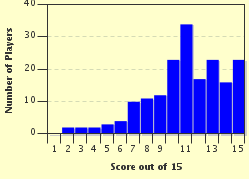Quiz Answer Key and Fun Facts
1. '16 Magazine' was a never-ending source of enchantment to teenage North American girls in the mid 1960s. It was 25 cents and printed on cheap newsprint, and on the cover were goofy cartoons and lots of exclamation marks. What made it different from other magazines for young girls?
2. The editor-in-chief of '16 Magazine' from 1958 to 1975 was the single driving influence in the concept and development of the magazine. Who was she?
3. The '40 Intimate Questions' interviews were an integral part of the '16 Magazine' experience for many years. Which one of these questions would be the ONLY one likely to appear among the 40?
4. In 1964, The Supremes had their first number one US hit, 'Where Did Our Love Go?' (number three in the UK). They were pretty famous. Where would you have found a Supreme in '16 Magazine' at that time?
5. The mid-60s were all about the British Invasion. After the 1963 North American success of 'Glad All Over', what British band was constantly touted as the Beatles' main rival, according to '16 Magazine'?
6. Peter Noone was the front man for a British group who pretty much owed their North American fame to '16 Magazine' - and he never forgot this. What was the name of the band?
7. One of my favorite features of the mid-60s '16 Magazine' was a monthly 'Letter from London'. It was written by George Harrison's girlfriend and future wife. Who was she?
8. With hits like 'World Without Love' (1964) and 'Woman' (1966), this British duo was one of the most successful bands of the British Invasion. Most '16 Magazine' readers, however, were more interested in the fact that one of the two was Paul McCartney's girlfriend's brother. What was the name of the group?
9. The Rolling Stones were a little too raw and badly-dressed to feature prominently in the '16 Magazine' pantheon of British invaders. The magazine pushed only one Stone; the blonde, cuddly 'sensitive' one with the beautiful clothes, the only one the editor felt would appeal to 14-year-old girls. Which one was he?
10. What Beverly Hills garage band was featured monthly in the pages of '16 Magazine' in 1965-66? Their first big 1965 hit went something like this: 'Tell you, baby, I'm not the lovin' kind. So you better get it off your mind...'
11. In 1966, '16 Magazine' started enthusiastically covering every move made by the 'Prefab Four'. You could read about the day Peter cried, win a hair badge from Mike, learn Davy's love secrets and Micky's greatest fear. Who were these guys?
12. 'Who wants to buy this diamond ri-i-i-ing?' The boys can't play their instruments, and I can't si-i-i-ing...' Nevertheless, this band was honoured month after month in '16 Magazine' over 1965-66 with '100 Wiggy Questions', promised dream dates and more. Who were they?
13. Let's face it, this band was not '16 Magazine' material in the mid-60s. The guys were older than was considered acceptable. None of them had exploitably baby-faced good looks or Beatle-hair. And they weren't even from England! When they recorded 'Pet Sounds' in 1966, it was too 'far out' for the magazine's readers. What 'loser' band are we talking about here?
14. He was a shaggy-haired cuddlebunny and she had a dark, shimmering sheet of perfect '60s hair and a beautiful alto voice. They were the only married couple to share top billing in '16 Magazine' in the '60s, but for them, it was only the beginning. Who were they?
15. '16 Magazine' was the most imitated magazine of its time and it even had fans who weren't 14-year-old girls. For example, one Ralph P. Gleason was a great admirer. He co-founded a much more critically respected rock magazine in 1967. What was it?
Source: Author
annaheldfan
This quiz was reviewed by FunTrivia editor
Pagiedamon before going online.
Any errors found in FunTrivia content are routinely corrected through our feedback system.

